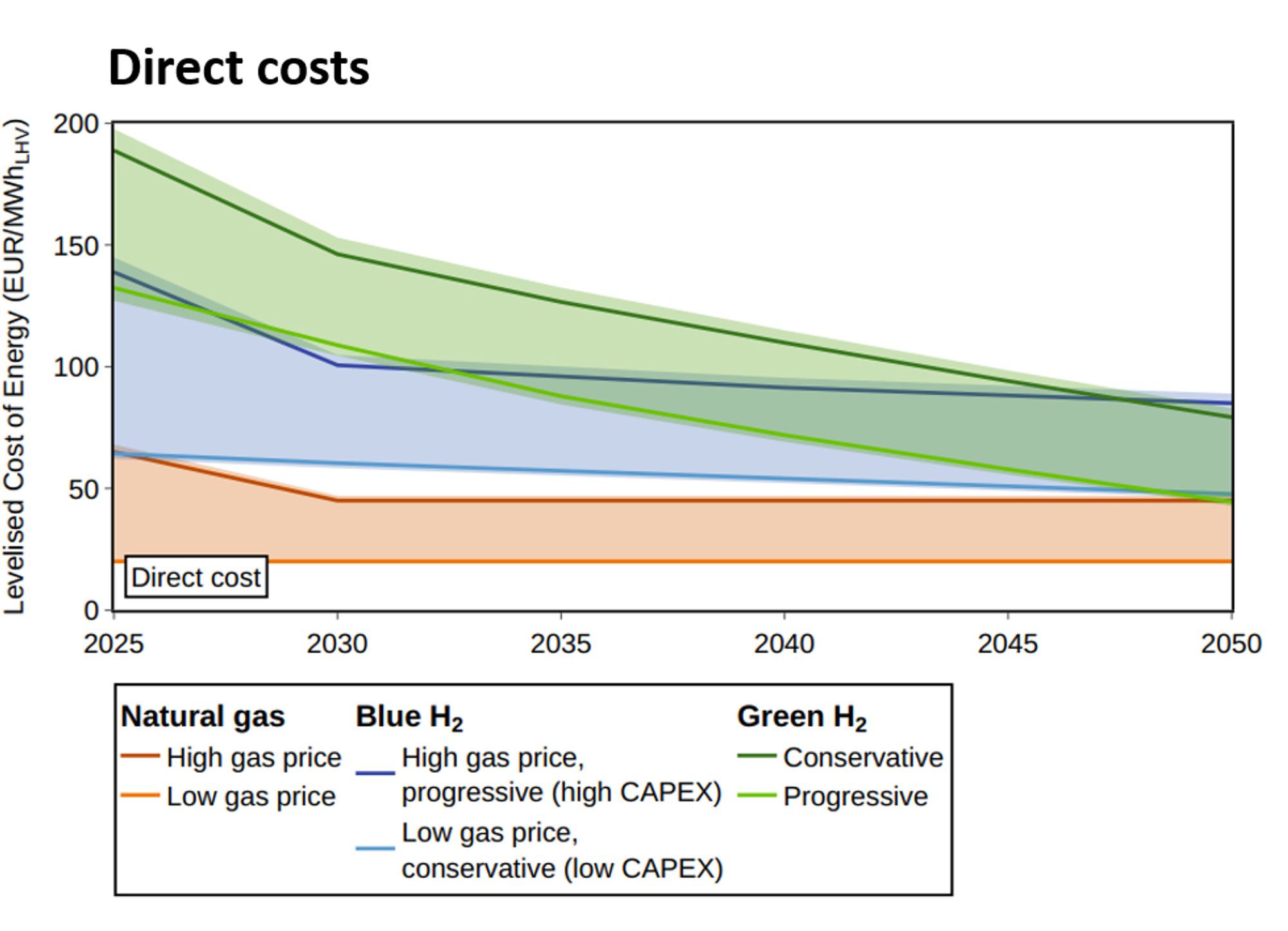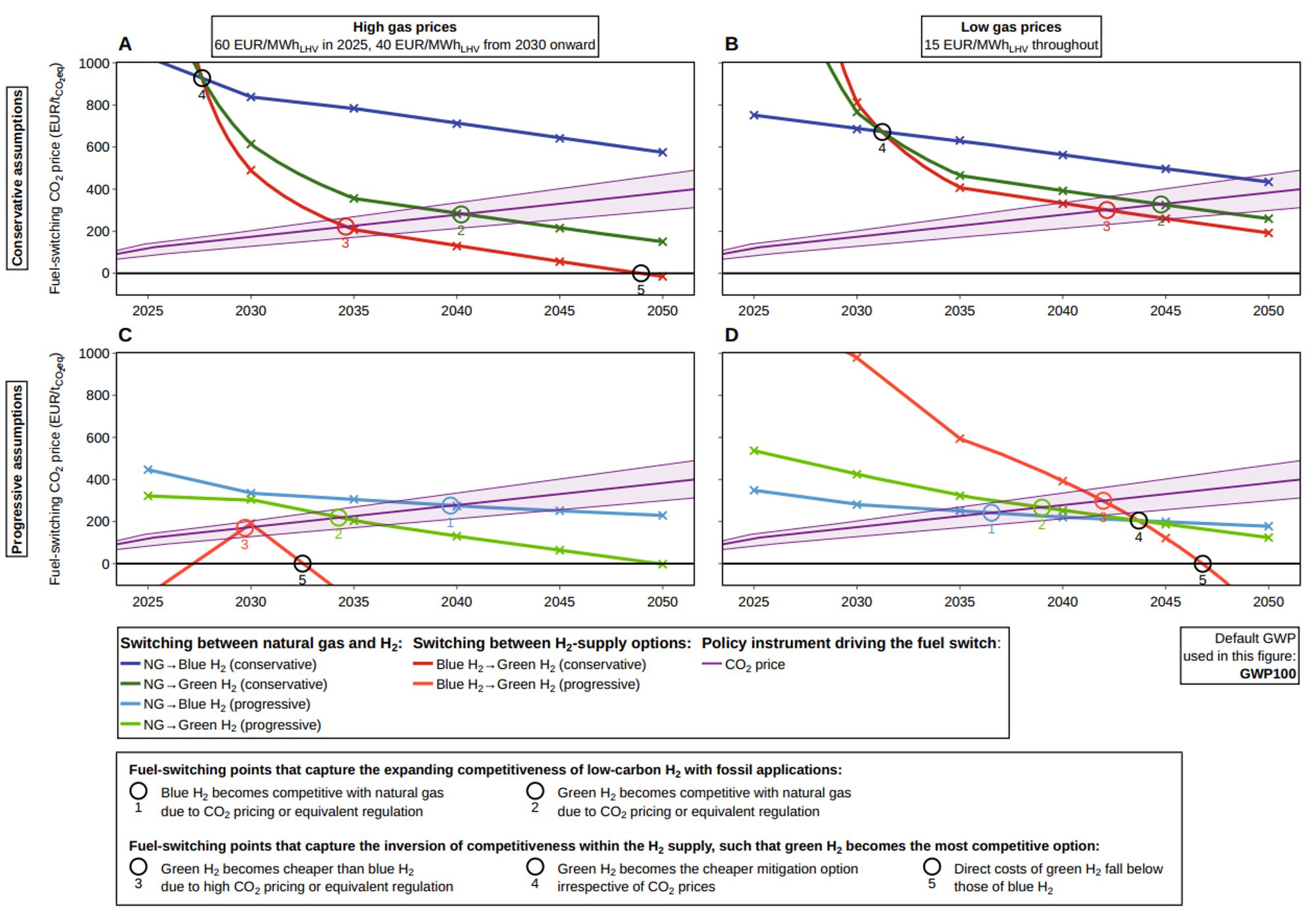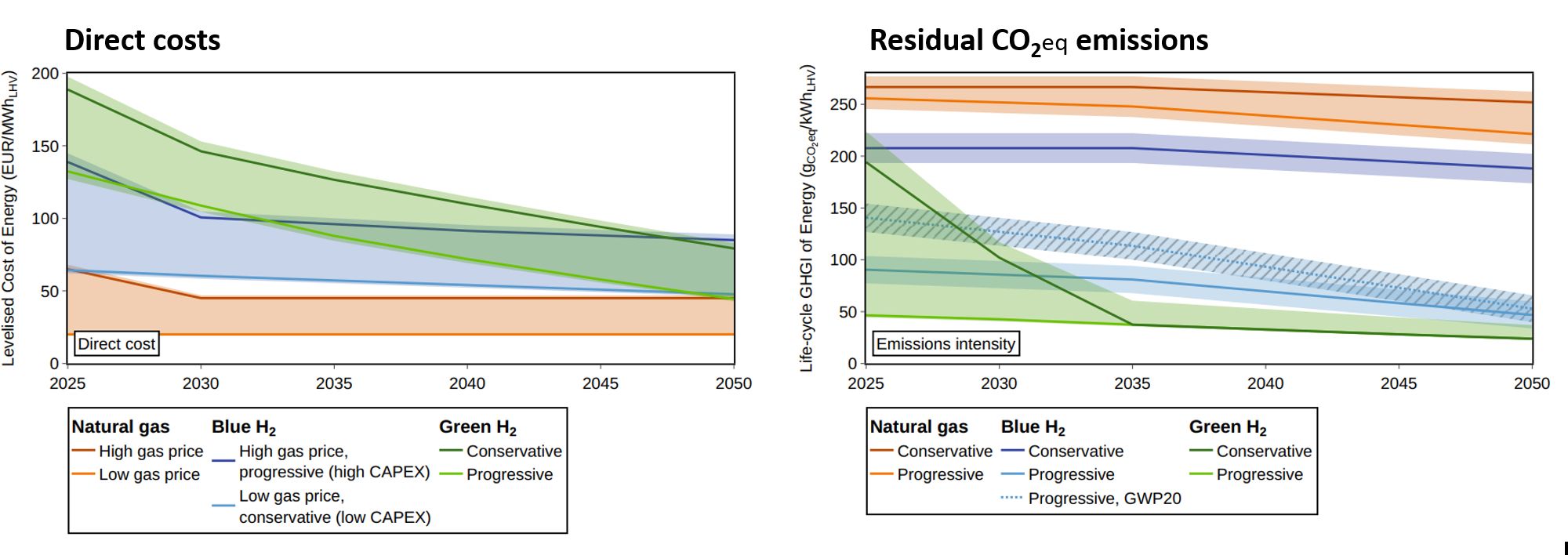I am somewhat optimistic due to i) political momentum around methane (e.g. Global Methane Pledge), ii) annual IEA methane tracker and iii) emission thresholds for hydrogen formulated in terms of "lifecycle GHG" (often tbd but e.g. IRA seems to include upstream methane through the 45VH2-GREET model).
open paper link: authors.elsevier.com/c/1iMSj925JE...@philippverpoort.bsky.social@fjbeck.bsky.social@tomecon.bsky.social , Simon Roussanaly Thank you!
Finally, low methane leakage rates are technically possible (see e.g. Norway); yet, policy makers need to take a life-cycle GHG perspective and price or regulate upstream methane and CO2 emissions when importing blue hydrogen&ammonia. Uncertainty & monitoring challenges will need to be resolved 8/9

4. For low gas prices (~15€/MWh) there is a substantial competitiveness window for blue hydrogen, if produced with >90% CO2 capture and <1% methane leakage. Direct cost parity reached ~2045, yet green hydrogen might have a competitive edge before 2045 due to slightly higher blue h2 emissions. 7/9

2. If blue hydrogen is produced with low capture rates or high methane leakage, it can neither compete with natural gas nor with green hydrogen. 3. Where gas prices are high (~40 €/MWh), even clean blue hydrogen can hardly compete with cheap green hydrogen (progressive case). 6/9
1. To compete with natural gas, both green and blue hydrogen likely require substantial policy support until at least 2035 (in addition to carbon pricing). Hydrogen will remain costlier than natural gas. CO2 pricing or emission regulation are needed also in the long term. 5/9

We quantify these fuel-switching points by combining progressive and conservative cases for green and blue hydrogen supply - as well as low and high gas prices. (I know it is a complex figure: the legend explains the milestones. pls see equations and theory in the paper) Main results are... 4/9

Underlying economics: From the intersections of fuel-switching CO2 prices in time, we derive five fuel-switching points that capture the increasing competitiveness of green hydrogen with blue hydrogen. In general, high residual emissions close the competitiveness window of bridging options. 3/9

Key insight: Blue hydrogen's residual emissions (CO2 and CH4) can close its competitive window earlier than direct cost parity with green h2 suggests. To compete, blue hydrogen i) needs to be clean (CO2 capture rate >90% and methane leakage rates <1%) and ii)gas prices need to be low (15 €/MWh) 2/9

How will green and blue hydrogen compete with natural gas and with each other? New paper that combines ranges for direct cost developments and residual emissions. Importantly, CO2 & methane pricing or emission regulation will have an increasing impact authors.elsevier.com/c/1iMSj925JE... 1/9